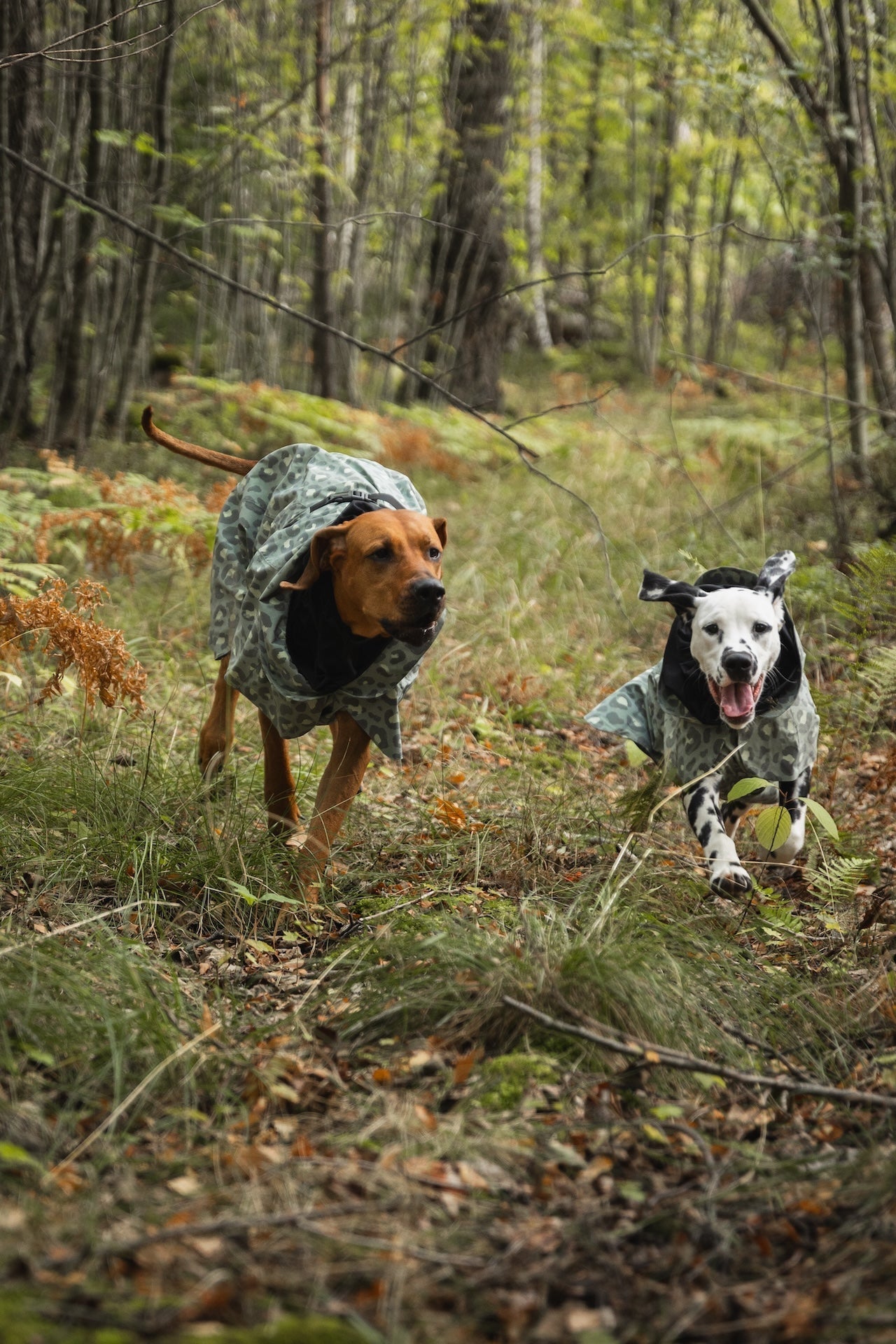Working dogs—whether they’re herding sheep, running canicross trails, hunting in the field, performing agility, or competing in obedience—rely on strong, resilient muscles to perform at their best. Just like human athletes, they need a comprehensive routine to build strength, recover properly, and avoid injury. Ensuring your dog’s muscular health isn’t just about physical performance—it’s also a vital part of their overall wellbeing.
Here’s how to support your working dog’s muscular health through everyday practices, designed to keep them happy, healthy, and ready to take on their favorite activities.
Build Strength with Varied and Functional Exercise
Strong muscles are built through consistent and smart physical activity. To develop strength safely, your dog needs regular exercise that challenges different muscle groups and supports coordination, core stability, and balance. Varying the terrain and environment—such as taking your dog on forest paths, uneven fields, or sandy trails—not only activates multiple muscle chains but also engages your dog’s mind and improves body awareness.
Functional exercises like walking in shallow water or on soft sand offer natural resistance that enhances muscle tone without overexertion. Activities like hill climbing and controlled off-leash play also help maintain lean body mass and cardiovascular endurance.
Warm-Ups and Cool-Downs: Non-Negotiable for Muscle Safety
One of the most common causes of strain and injury in active dogs is skipping the warm-up. Before any strenuous activity, your dog should engage in 5–10 minutes of gentle walking or light trotting to get blood flowing to the muscles and prepare the joints. A proper warm-up increases flexibility, improves performance, and reduces the risk of injury.
After the activity, a cool-down is equally essential. Gradually decrease the intensity of movement to return the body to a resting state. You can finish with light stretching or calm leash walking to help flush out metabolic waste and support recovery.
According to a Swedish study of working and sporting dogs, warm-up and conditioning were routine practices, particularly in agility sports, where handlers were especially diligent about pre-activity preparation (Essner et al., 2019).
Don’t Underestimate the Power of Rest
Muscle development happens during rest, not during exercise. That’s why rest and recovery are key components of a working dog’s training plan. Make sure your dog has scheduled rest days—whether it's full downtime or easy recovery walks—and never push through signs of fatigue.
Watch out for behavioral clues like reluctance to move, stiffness, or excessive tiredness. These can be signs that your dog needs more time to recover. Just like with athletes, rest prevents overuse injuries and helps the body rebuild stronger and more resilient.
Long-Term Conditioning over Quick Fixes
Focus on developing your dog’s strength and stability over time with sport-specific training and activities suited to their size, breed, and age. Regular conditioning routines should include resistance work, mental stimulation, balance training, and moderate cardio.
Incorporating different types of movement—from sprint intervals to slow, focused commands—helps create a balanced, capable canine athlete. Don’t forget the importance of proper nutrition and hydration, which play a crucial role in muscle recovery and performance.
Final Thought
Supporting your working dog’s muscular health is about more than just physical fitness—it’s about creating a holistic, sustainable lifestyle that includes varied movement, proper warm-ups and cool-downs, and well-earned rest. With consistency, awareness, and care, you can help your dog stay strong, agile, and ready for every challenge ahead.
Let’s keep our dogs moving—smart, steady, and strong! 🐾💚
References
-
Essner, A., Hesbach, A.L., Igelström, H., Kjellerstedt, C., Svensson, K., & Westerlind, H. (2022). Physical activity and sport-specific training patterns in Swedish sporting and working trial dogs—A questionnaire survey. Frontiers in Veterinary Science, 9, 976000. Available at: https://doi.org/10.3389/fvets.2022.976000Frontiers+3labs.wsu.edu+3Frontiers+3
-
Essner, A., Hesbach, A.L., Igelström, H., Kjellerstedt, C., Svensson, K., & Westerlind, H. (2023). Injuries and associated factors in Swedish sporting and utility trial dogs—A cross-sectional study. Animals, 14(3), 398. Available at: https://doi.org/10.3390/ani14030398MDPI+1uu.se+1
-
Isaksen, K.E., Linney, L., Williamson, H., Cave, N.J., Norman, E.J., & Cogger, N. (2020). TeamMate: A longitudinal study of New Zealand working farm dogs. II. Occurrence of musculoskeletal abnormalities. Frontiers in Veterinary Science, 7, 624. Available at: https://doi.org/10.3389/fvets.2020.00624Wiley Online Library+3CoLab+3Frontiers+3
